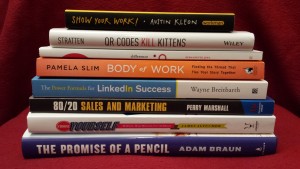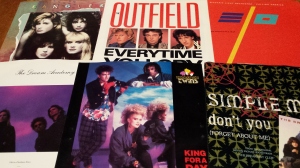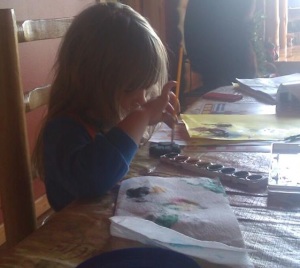 After reading so many wonderful books in 2013, I wasn’t sure how 2014 was going to be able to compete, but compete it did. 2014 provided a treasure trove of insight, information, and realizations. There are some stellar pieces of work out there.
After reading so many wonderful books in 2013, I wasn’t sure how 2014 was going to be able to compete, but compete it did. 2014 provided a treasure trove of insight, information, and realizations. There are some stellar pieces of work out there.
Inspiration and Creativity in Life and Business.
 After reading so many wonderful books in 2013, I wasn’t sure how 2014 was going to be able to compete, but compete it did. 2014 provided a treasure trove of insight, information, and realizations. There are some stellar pieces of work out there.
After reading so many wonderful books in 2013, I wasn’t sure how 2014 was going to be able to compete, but compete it did. 2014 provided a treasure trove of insight, information, and realizations. There are some stellar pieces of work out there.
 I went to visit some friends who work at AT&T at the very building where I started my career with the company, back when they were known as Ameritech. 10 days earlier some of my former colleagues celebrated their 20 year anniversary with the company.
I went to visit some friends who work at AT&T at the very building where I started my career with the company, back when they were known as Ameritech. 10 days earlier some of my former colleagues celebrated their 20 year anniversary with the company.
 In my last post I wrote about finding the motivation to learn something new. Once you have the motivation, how do you do actually go about learning?
In my last post I wrote about finding the motivation to learn something new. Once you have the motivation, how do you do actually go about learning? When I was 10 years old my sister and I went with my mom to visit one my mom’s childhood friends in Jackson, Mississippi. My mom’s friend had kids around our age and every afternoon we’d head to the local swimming pool. At first I didn’t want to go because I didn’t know how to swim. Being in the water was terrifying. I thought I might go under and drown.
When I was 10 years old my sister and I went with my mom to visit one my mom’s childhood friends in Jackson, Mississippi. My mom’s friend had kids around our age and every afternoon we’d head to the local swimming pool. At first I didn’t want to go because I didn’t know how to swim. Being in the water was terrifying. I thought I might go under and drown.
 Back in the days when record albums were issued in vinyl, I used to base my decision to plop down money for the entire album on whether or not I liked the B-side of the single. My thinking was, if the B-side was good the album would be good. If the B-side was good but wasn’t on the album, the album had to be great because they had more material than they could fit on the album.
Back in the days when record albums were issued in vinyl, I used to base my decision to plop down money for the entire album on whether or not I liked the B-side of the single. My thinking was, if the B-side was good the album would be good. If the B-side was good but wasn’t on the album, the album had to be great because they had more material than they could fit on the album.
 Years ago my wife and I were flying out of O’Hare in Chicago during the Christmas holidays. We asked the gate agent at the terminal if there was a meal on the flight. He checked our tickets and said there wasn’t. We thanked him and headed to the food court to grab a couple of sandwiches.
Years ago my wife and I were flying out of O’Hare in Chicago during the Christmas holidays. We asked the gate agent at the terminal if there was a meal on the flight. He checked our tickets and said there wasn’t. We thanked him and headed to the food court to grab a couple of sandwiches.
Last year I won tickets to go to INBOUND in Boston. In the marketing world, it’s a big deal. The conference boasts an amazing lineup of incredible speakers, authors, and experts. Unfortunately, I couldn’t work out my schedule with my employer and wasn’t able to attend. As the conference approached, I looked at going this time around.
 Recently my sister decided to give my 3 1/2 year old niece some paints, brushes, and paper; figuring that she’s old enough to be able to have fun without making too much of a mess. My niece enjoys coloring books and drawing, so it seemed like a logical progression.
Recently my sister decided to give my 3 1/2 year old niece some paints, brushes, and paper; figuring that she’s old enough to be able to have fun without making too much of a mess. My niece enjoys coloring books and drawing, so it seemed like a logical progression.
 One of the things I love most about fall is apple season. Apples are my favorite fruit and there’s nothing like having a crisp, fresh, delicious apple. Apple season only lasts about two months, so I appreciate it when it comes around.
One of the things I love most about fall is apple season. Apples are my favorite fruit and there’s nothing like having a crisp, fresh, delicious apple. Apple season only lasts about two months, so I appreciate it when it comes around.
Writer, Marketer, Music lover. Seeker of inspiration and creativity. Fascinated with The Beatles.
Copyright © 2025 · eleven40 Child Theme on Genesis Framework · WordPress · Log in
Follow Me!